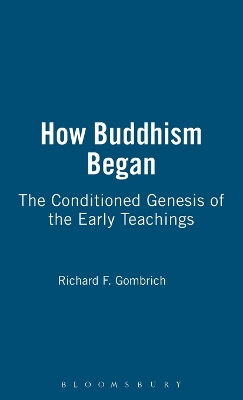This book takes a fresh look at the earliest Buddhism texts and offers various suggestions how the teachings in them had developed. Two themes predominate. Firstly, it argues that we cannot understand the Buddha unless we understand that he was debating with other religious teachers, notably brahmins. For example, he denied the existence of a 'soul'; but what exactly was he denying? Another chapter suggests that the canonical story of the Buddha's encounter with a brigand who wore a garland of his victims' fingers probably reflects an encounter with a form of ecstatic religion. The other main theme concerns metaphor, allegory and literalism. By taking the words of the texts literally - despite the Buddha's warning not to - successive generations of his disciples created distinctions and developed doctrines far beyond his original intention. One chapter shows how this led to a scholastic categorisation of meditation. Failure to understand a basic metaphor also gave rise to the later argument between the Mahayana and the older tradition.
Perhaps most important of all, a combination of literalism with ignorance of the Buddha's allusions to brahminism led buddhists to forget that the Buddha had preached that love, like christian charity, could itself be directly salvific.
- ISBN10 0485174170
- ISBN13 9780485174175
- Publish Date 1 January 1996
- Publish Status Active
- Publish Country GB
- Publisher Bloomsbury Publishing PLC
- Imprint Continuum International Publishing Group Ltd.
- Format Paperback (UK Trade)
- Pages 140
- Language English
